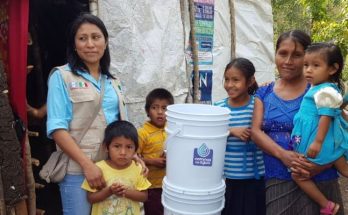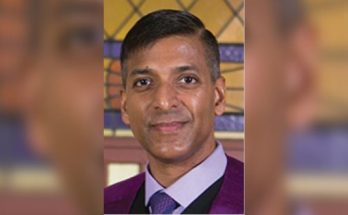By Debra Broussard
The Biblioteca recently presented a free seminar focused on cardiac care in San Miguel. This was the second of a health series entitled “Mexico, Medicine, and Me” that informs the community about medical treatment available in and around our city.
The presenters included two cardiologists: Dr. Jorge Alvarez de La Cadena Sillas and Dr. Santiago Casal Alonso. It also included Dr. Francisco Meléndez Alhambra, a cardiac surgeon, and Dr. Jose Luis Romero Ibarra, a cardiac interventionist. The panel was moderated by Dr. Grace Lim, an internal medicine physician.
What you need to know about cardiac emergencies:
- Heart attacks are still the number one cause of mortality in the world!
- Your best chance for survival starts with prevention.
There are lifestyle changes you can make to reduce your likelihood of a heart attack, and these include not smoking, daily exercise, managing your blood pressure and cholesterol, treating sleep apnea, eating a healthy diet, and managing stress.
Men over 45 years old and post-menopausal women should schedule annual consultations with their primary care physician for a heart screening that includes an EKG and a stress test.
It is important to establish a relationship with a primary care doctor before an emergency arises! Then, if and when an emergency does arise, your first call should be to your doctor rather than to 911 or Cruz Rojas (Red Cross).
Your primary care doctor acts as your “team leader” in a medical emergency and calls an ambulance for you, alerts the hospital of your arrival, provides the hospital with your specific medical details, gives you quick advice on how to mitigate your problem, and meets you in the emergency room.
Plus, he or she also knows your medical history, what medications you take, what allergies you have, your blood type, and plenty of other information that the hospital emergency care staff will find invaluable. These are all things an emergency responder will also need to know—and most likely in Spanish!
Some signs you may be having a heart attack:
- Tightness, pressure, or pain in the chest area
- Pain in either of the arms
- Shortness of breath or dizziness
- Nausea
- Cold sweats
If you suspect you are having a heart attack, time is of the essence.
When experiencing a heart attack, the heart is being deprived of oxygen. When the heart is deprived of oxygen damage occurs to the muscle. When you have a symptom, you should be checked by the medical facility that can see you the soonest.
Call your primary care doctor first to have them arrange an ambulance for you and prepare the ER for your arrival for a suspected cardiac event. If you do not have a primary care physician in town, dial 911 or call the Red Cross. Most likely the attendants in these ambulances will not speak English. Do not try to drive yourself to the hospital. You don’t want to risk lives by having a full-blown heart attack while driving.
Which ER should you go to?
Any hospital in San Miguel can administer clot busting medications. So go to the nearest ER or as instructed by your primary care physician. Once you are in the ER and the doctors have determined that a cardiac event has occurred, you may need to be transferred to a fully equipped catheterization lab (cath lab) to be treated with interventions.
Cardiac intervention in a cath lab:
A cardiac intervention team can conduct a procedure that helps to measure the pressure of the blood flow in and around the heart. This is performed in a cath lab by a specially trained cardiologist and a highly trained team of nurses, technicians, and radiologists. You are sedated but awake enough to follow instructions. As plaque builds up in the arteries, blood flow to the heart is decreased or cut off completely. In this case, a catheter is placed in the artery and where blockage is detected, an angioplasty is done. A balloon is inserted that crushes the plaque and opens the artery—or they can insert a stent(s), which is a short hollow expandable tube placed inside the artery to hold it open and improve blood flow. If a calcification is found, the team can use an instrument that, essentially, drills through the calcification to open the artery.
You will want to use a cath lab staffed with a specially trained team and with access to ample supplies of equipment and medications to address any contingency that may arise during the intervention. The ideal is to have a cardiovascular surgeon in the cath lab ready to back up the interventional cardiologist if a complication occurs.
Hospital Joya can manage your emergency but does not have a cath lab. Joya would need to transfer you to another facility for any cardiac intervention procedure or surgery.
MAC Hospital is the only hospital in San Miguel with a cath lab able to do cardiac catheterization procedures. While MAC hospital does have a cath lab, it is important to note that the members of the cardiac team who would treat you may need to travel from Querétaro and bring necessary supplies with them.
Deciding where a cardiac intervention procedure should be done is a discussion for you to have with your doctor once it is determined that you are a candidate for intervention.
There are 17 cath labs in Querétaro. The cath labs at Star Medica and the Heart Institute in Querétaro are well-stocked with trained staff readily available if something unexpected happens during an intervention procedure. In 90% of the intervention cases at the Heart Institute, the average cost to a patient is US$12,000-$14,000, but this cost will vary depending upon supplies required for the procedure.
Chronic heart disease patients need to work with their medical team to decide whether intervention or surgery is most appropriate.
San Miguel’s high altitude of 6,234 feet (1,900 meters) can initially impact your blood pressure. This is a normal response, and your heart will typically adjust to the current altitude in a week or so. People with low oxygen levels and chronic diseases that are sensitive to oxygen may have their symptoms worsen at these higher altitudes.




